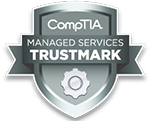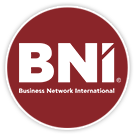Now more than ever, remote teams are looking to leaders to ensure they have work environments where they feel accepted, heard and supported. The Advancing Tech Talent and Diversity Community recently took on this topic with Amiel Harper, founder and principal of The Morpheus Consultancy, and Delia Gutierrez McLaughlin, president and CEO of AzTech Innovation, discussing what it means to be inclusive with Yvette Steele, director of member communities at CompTIA, on a recent podcast. The conversation focused on why inclusion is important to organizational success as well as how to foster inclusion for remote teams in particular. Here are five tips managers can take away from the conversation.
Inclusion is About More Than Diversity
Diversity in tech has been a hot topic for many years, but inclusion in the workplace takes it one step further—beyond making sure you have everyone simply represented at your company. Both Gutierrez McLaughlin and Harper shared their personal perspectives on inclusion.
“To me, inclusion is making sure that everyone has a voice within our organization,” said Gutierrez McLaughlin. “It’s about me caring that everyone comes to work representing their entire selves and bringing their whole self to work. It’s us as a team engaging all meeting participants.”
Harper used an analogy to illustrate how inclusion is what pushes us to reap the benefits of having a diverse work environment. “It’s great to be at the table, but I want everyone to eat. People get to have a shared voice, but then also have a weight of voice—being able to have their ideas and identities considered in a way that is meaningful, and in a way that’s representative, both internally in terms of how the organization operates, then also how the organization engages and is living out its values,” he said.
Inclusion Allows for Growth
Much has been written about how diversity can improve a company’s performance. In CompTIA’s Diversity in the High-Tech Industry research report, 64% of respondents agreed that an organization with a diverse employee base is more likely to produce world-class innovation. But when managers successfully foster inclusive teams, it also gives individuals the opportunity to grow.
“If you’re in an environment that values inclusion, your career will accelerate… The other piece is, that on a personal level, you develop and learn more as you engage with people of different cultures, backgrounds, languages, ethnicities, gender, orientation, sex… There’s definitely a professional benefit in learning more from different experiences,” said Harper.
In addition to learning more about yourself, when provided a safe space to speak up and provide ideas, you also develop confidence and feel valued as a team member.
“It’s an opportunity to bring my lens, my perspective, my experience, everything forward. I can contribute in a way that is meaningful, which makes me feel valued,” said Gutierrez McLaughlin. “Whether your idea gets taken on and flourishes or it was a good idea, but not the right time, let’s say, you still you want to feel valued. When I put an idea on the table, I’m being vulnerable.”
Be Vulnerable as a Leader
Creating inclusive environments requires leaders to think differently about how they present themselves to their team. Especially now, as teams face unprecedented challenges, leaders must show authenticity, be willing to let their guard down and connect with their teams. Leaders must also realize that they don’t have all the answers.
“I think the most important part of being an inclusive leader, particularly now, is being vulnerable. And what I mean by that is being a leader who can acknowledge what you know, and what you don’t know, and what you intend to learn together as you go through all the changes and challenges to meet business objectives,” said Harper.
Collaboration is key to any team environment and when leaders acknowledge that they need their teams to achieve goals, it shows vulnerability and gives employees permission to voice their thoughts and opinions.
Ask for Input
As leaders continue to face the reality of dispersed teams and rethink how they manage people, there are elements of in-person office culture than can be successfully transferred to remote environments. But much has to be reimagined.
“Let’s look at the elements from when we were all in the same office. And then let’s look at the elements that can be transferred to being remote. Keep the ones that work. Ask teammates for ways that we can tweak, redesign, incorporate those elements that are not favorable for remote workers. One key element is partnership. Two, is engagement—conversation with teammates where their voice is heard, listened to, considered and fostered to an outcome,” said Gutierrez McLaughlin.
Remote teams have different cultures than in-office teams and different needs. Building a strong, inclusive remote team requires a manager to be purposeful, to think about how they ask everyone to engage, and to continually adjust to what’s working and what isn’t.
“When you work in a remote environment, things become more structured. It’s important. It leads to productivity. But it also changes your culture. Being intentional on how you structure meetings to accommodate all of the people in your team is important,” said Harper. “Also, I would literally put space on an agenda for flex. Have space and time for individuals to contribute. It doesn’t necessarily mean that everything’s going to happen. But it gives people the opportunity to be heard and to share.”
Maximize Your Tools
Inclusion for remote teams also means ensuring that everyone can effectively do their work, collaborate and meet. Companies that didn’t plan for teams to be fully remote have likely dealt with disparate remote work setups—for example, some employees may not have a laptop, an extra monitor at home, a separate workspace or even a broadband connection.
“Tools are critically important. Some companies have a very robust work from home policy. Some organizations have a medium, some don’t have any,” said Gutierrez McLaughlin. “It’s about caring about everyone who comes to work and letting them represent their entire selves. It’s about being comfortable, having the ability to multitask, but switching where we do it.”
Beyond ensuring everyone has access, maximize collaboration tools so your employees can create camaraderie and connection—even in a remote environment.
“So many of the intangible, kind of unplanned benefits of having people in the same space and time happen just from interaction. So, creating space for that interaction to happen—not just from a business perspective, but also from a personal and interpersonal perspective, as we’re still dealing with human needs across the board—feeling valued, safe, appreciated and included. Whether you’re making adjustments for remote workers or entering into it for the first time do that, having that space is important,” said Harper.
Remote Team IT Solutions in Toronto
NUMENTIS helps organizations re-tool and configure their operations for remote access and telecommuting. Our IT solutions team in Toronto also monitors networks and devices in real time to minimize the risk of cybertattack. Call us today to find out how we can help you resolve the little problems that reduce your employees’ productivity.



